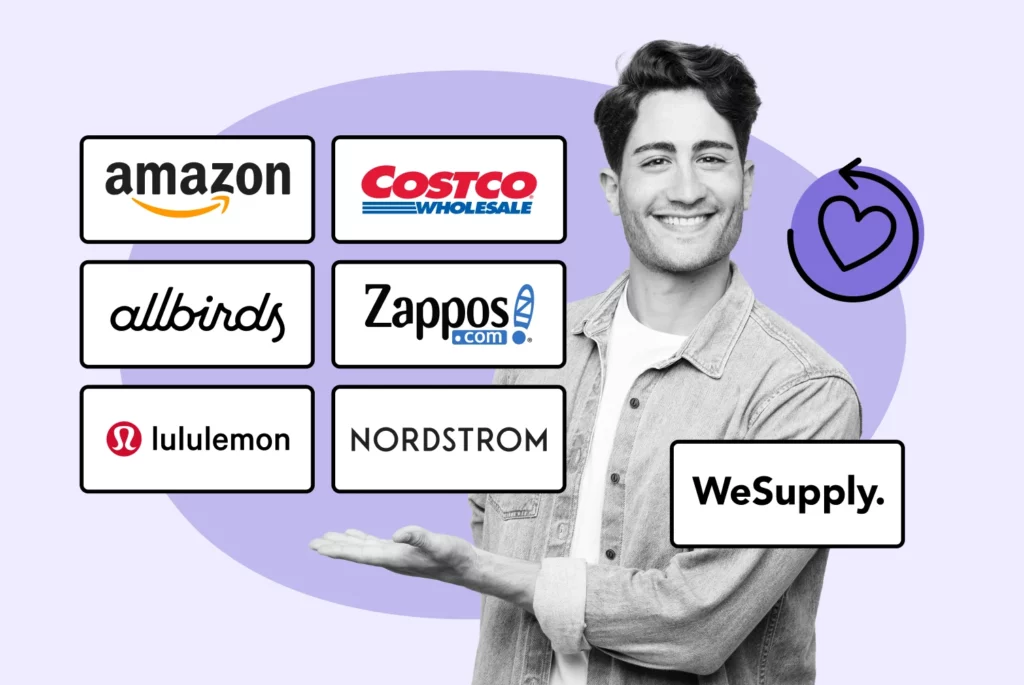
The 6 Most Loved Returns Experiences Online
Explore the key factors that contribute to the most loved returns experiences, the return policies of retail giants, and the benefits of customer-centric return policies.
Shipping, Tracking & Notifications
Boost customer experience and reduce support tickets
Realtime order and shipment tracking
Proactive order and shipping notifications
AI-Enhanced Discounted Labels
Predictive pre-purchase estimated delivery dates
Self-Serivce branded order tracking
Effortless experience delivered
Identify and Resolve Order Issues
Realtime order and shipment tracking
Make returns profitable and delight customers
Flexibility to define any return destinations & conditions
Simplify returns for your customers and team
Incentivize exchanges over returns
Returns management made easy for your team
Returns management made easy for your team
Easy claims and smart upsells
Understand why your customers are returning
In-Store & Curbside Pickup
Unify the online and the in-store experience
Hassle-free pickup experience for customers
In-Store dashboard to keep operations streamlined
In-Store and Online orders unified
Drive foot-traffic to your stores
Shipping, Tracking & Notifications
Boost customer experience and reduce support tickets
Realtime order and shipment tracking
Proactive order and shipping notifications
AI-Enhanced Discounted Labels
Predictive pre-purchase estimated delivery dates
Self-Serivce branded order tracking
Effortless experience delivered
Identify and Resolve Order Issues
Realtime order and shipment tracking
Make returns profitable and delight customers
Flexibility to define any return destinations & conditions
Simplify returns for your customers and team
Incentivize exchanges over returns
Returns management made easy for your team
Returns management made easy for your team
Understand why your customers are returning
In-Store & Curbside Pickup
Unify the online and the in-store experience
Hassle-free pickup experience for customers
In-Store Dashboard to keep operations streamlined
In-Store and Online orders unified
Drive foot-traffic to your stores
Boost customer experience and reduce support tickets
Realtime order and shipment tracking
Proactive order and shipping notifications
AI-Enhanced Discounted Labels
Predictive pre-purchase estimated delivery dates
Self-Serivce branded order tracking
Effortless experience delivered
Make returns profitable and delight customers
Flexibility to define any return destinations & conditions
Simplify returns for your customers and team
Incentivize exchanges over returns
Returns management made easy for your team
Equip your team for precise return checks.
Easy claims and smart upsells
Understand why your customers are returning
Unify the online and the in-store experience
Hassle-free pickup experience for customers
In-Store Dashboard to keep operations streamlined
In-Store and Online orders unified
Drive foot-traffic to your stores
Find the answer to all your questions
Take a step by step trip through our functionality to see how we can improve your ecommerce processes.
Explore the most comon questions about WeSupply
Calculate the ROI that WeSupply can bring you
Request a no strings attached review of your current shopping experience and missed conversion opportunities
Read actionable articles on how to optimize your post-purchase experience and decrease support tickets
Get inspired by stories of how our customers implemented an effortless post-purchase experience
Wondering if WeSupply is a good fit for you? Read through our use cases to see how we can help you increase conversion & improve CX!
A Deep Dive into Top Companies' Order Tracking & Returns Strategy
Find the answer to all your questions
Explore the most comon questions about WeSupply
Calculate the ROI that WeSupply can bring you
Request a no strings attached review of your current shopping experience and missed conversion opportunities
Take a step by step trip through our functionality to see how we can improve your ecommerce processes.
Read actionable articles on how to optimize your post-purchase experience and decrease support tickets
Get inspired by stories of how our customers implemented an effortless post-purchase experience
A Deep Dive into Top Companies' Order Tracking & Returns Strategy
Wondering if WeSupply is a good fit for you? Read through our use cases to see how we can help you increase conversion & improve CX!
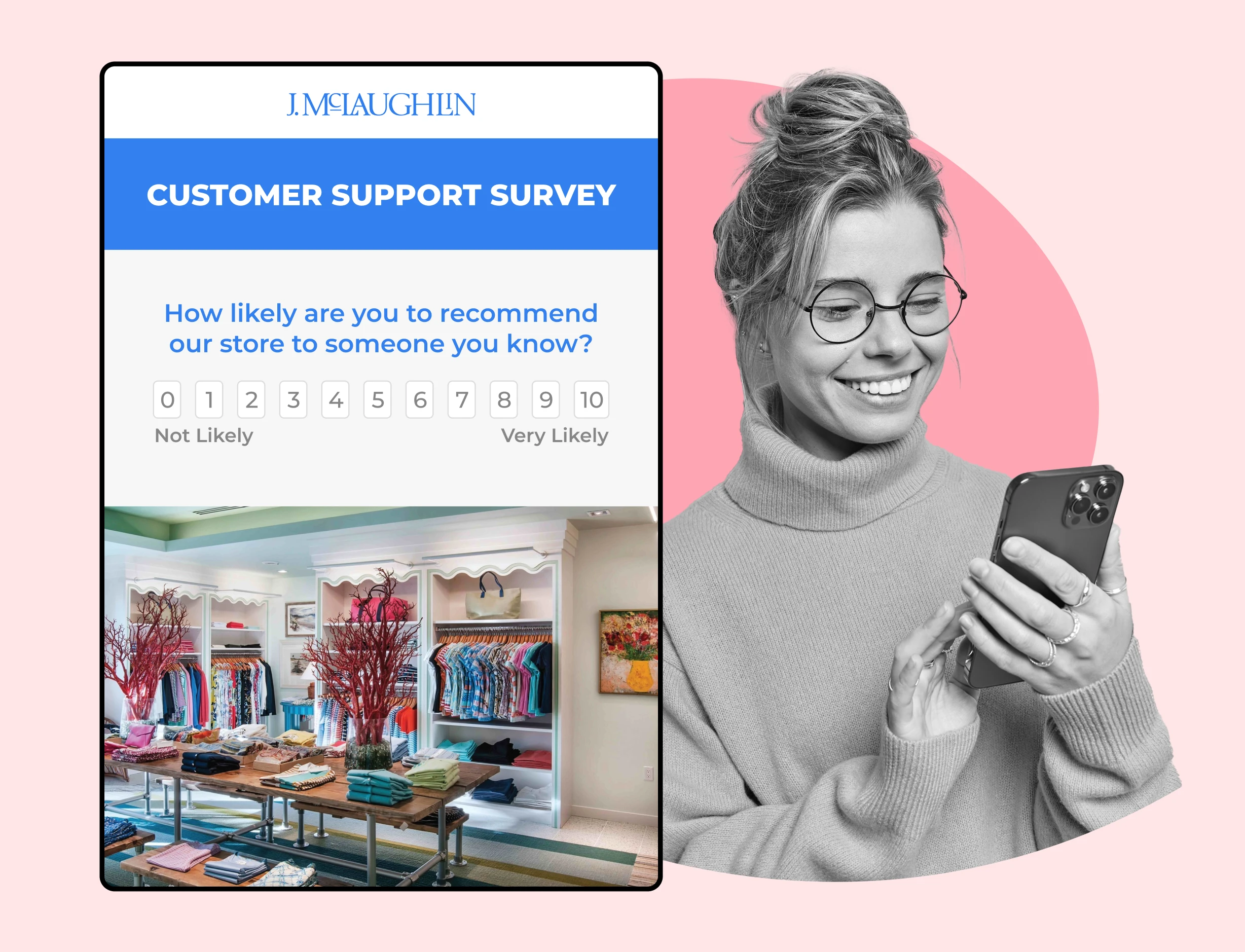
Picture this: You’ve just made a purchase online, eagerly awaiting its arrival. But once it’s in your hands, a nagging feeling sets in. Did you make the right choice? Are you truly satisfied with your purchase? This unsettling feeling is known as post-purchase cognitive dissonance, and it can significantly impact customer satisfaction, loyalty, and overall retail success. In this comprehensive guide, we’ll take you on a journey to understand, minimize, and even prevent post-purchase cognitive dissonance, transforming the shopping experience for customers and businesses alike.
Understand post-purchase cognitive dissonance and its impact on retail.
Leverage customer feedback to reduce dissonance, create long-term relationships, and ensure satisfaction.
Implement strategies such as quality control, expectation management & proactive engagement for future growth.
WeSupply effectively minimizes post-purchase cognitive dissonance by integrating functionalities like CSAT and NPS tracking, omnichannel order tracking, automated and self-service returns, returns analytics, and the option to convert returns into exchanges. This comprehensive approach streamlines the return process and optimizes customer satisfaction, ensuring a smoother post-purchase experience.
Customers often experience a mental conflict, known as post-purchase dissonance, following a purchase, especially when their expectations are not met or they feel regret. This phenomenon is a crucial element in retail, as it can significantly influence customer satisfaction. Addressing post-purchase dissonance is vital for businesses, e-commerce stores, and marketing managers to ensure positive post-purchase customer experiences and prevent unfavorable outcomes, such as one-time purchases, negative word-of-mouth, and poor social media reviews.
Implementing strategies that include:
Quality control
Managing expectations
Clear communication
Proactive customer engagement
Post-sale support
are key to reducing post-purchase dissonance. In addition, simplifying refunds and exchanges, leveraging customer feedback, building brand loyalty, and offering comparisons with competitors is essential to maintaining customer satisfaction and creating long-lasting relationships.
Post-purchase dissonance arises when there is a difference between a customer’s decision and their prior evaluation of a product. In the realm of e-commerce, this feeling of unease may be exacerbated due to the lack of physical interaction with the product, making it difficult to make an informed decision and increasing the likelihood of unmet expectations. Customers may experience post purchase dissonance, a feeling of regret or dissatisfaction distinct from buyer’s remorse, which is the regret experienced after the decision to buy a product. Post purchase dissonance occurs when these unmet expectations lead to a negative emotional response.
The cost of acquiring new customers is estimated to be anywhere from 5-25x higher than retaining existing ones. Surprisingly, approximately 82% of brands are not currently focusing on an overall customer retention strategy. Understanding the psychology underpinning post-purchase dissonance empowers businesses to mitigate its impact, thereby enhancing customer satisfaction and loyalty, and driving long-term success.
Primary factors leading to post-purchase dissonance include discrepancies between expectations and reality, inadequate information or clarity regarding the product, and a lack of trust in the brand. Research has shown that shoppers tend to read reviews and blog articles, consult experts, and review social media to make informed decisions. In fact, 79% of shoppers trust online reviews as much as personal recommendations from their peers.
Customers can reduce post-purchase dissonance by conducting comprehensive market research and comparative analysis prior to making a purchase. This increases the likelihood of a successful purchase and satisfaction. Establishing appropriate expectations for both products and shipping is another crucial step for businesses to reduce post-purchase dissonance.
Furthermore, implementing post-purchase surveys can reassure customers and convey that their post purchase customer experience is valued, mitigating dissonance and fostering positive customer relationships.
WeSupply’s approach to tracking CSAT and NPS is integral in identifying triggers of post-purchase cognitive dissonance, a crucial aspect for any business aiming to enhance their customer experience. By implementing post-purchase surveys, WeSupply not only captures valuable insights into common causes of consumer dissatisfaction but also communicates to customers that their feedback is highly valued. This practice not only helps in pinpointing areas of improvement, whether it’s order processing time or the product itself, but also reassures customers, mitigating dissonance and fostering positive relationships. Through this data-driven strategy, WeSupply empowers businesses to continuously adapt and refine their services to meet and exceed customer expectations.
The roles of quality control and expectation management are significant in alleviating post-purchase dissonance, as they ensure that products or services meet or exceed customer expectations. When customers feel content with their purchase, they are less likely to experience dissonance. Some strategies to alleviate post-purchase dissonance include:
Implementing real-time order tracking to alleviate stress or anxiety customers may have about their orders
Facilitating a stress-free delivery experience
Providing excellent customer service and addressing any concerns or issues promptly
By implementing these strategies, businesses can help reduce post-purchase dissonance and ensure customer satisfaction.
Flexible, self-service-based returns can empower customers with control over their purchase and generate a favorable post-purchase experience, fostering relationships with customers and creating a sense of support. Providing comprehensive product descriptions, emphasizing customer value, and adopting an omnichannel strategy with dedicated customer service and success managers can further aid in managing expectations and minimizing post-purchase dissonance.
WeSupply’s strategies, centered around omnichannel tracking and proactive communication, effectively minimize post-purchase cognitive dissonance. By providing a seamless tracking experience and personalized notifications, WeSupply ensures quality control and manages customer expectations, thus enhancing the overall post-purchase journey and fostering customer satisfaction and loyalty.
Key Features:
Centralization of orders from various channels for a unified experience.
Ensures reliable order tracking across multiple platforms.
Proactive Email & SMS Tracking Notifications:
Timely updates on order status via SMS and email.
High engagement rate with notifications tailored to customer preferences.
Proactive Notifications for Delivery Updates:
Keeps customers informed during the entire delivery process.
Builds loyalty through continuous engagement.
Automated Alerts for Delivery Issues:
Immediate notification of any delivery-related problems.
Coverage for common issues like warehouse delays or adverse weather conditions.
Predictive Pre-Purchase Estimated Delivery Dates:
Reduces shipping anxiety with clear delivery timeframes.
Incorporates delivery expectations into logistical planning.
Simplified return process with an intuitive interface.
Reduces the need for customer service interaction and manual processing.
Automates returns to minimize user error.
Discover how WeSupply can transform your post-purchase experience and drive customer satisfaction to new heights. Don’t just take our word for it – Book a demo today and see the difference for yourself!
Retailers should make information about their products readily accessible and provide customers with product-specific content to allow for a more comprehensive exploration of what is available. Establishing expectations from the outset by displaying estimated delivery dates and implementing cut-off times can further help align customer expectations with reality.
Preventing post-purchase dissonance through product descriptions requires incorporating clear and comprehensive details about the product’s features, specifications, and advantages. Accurate representation through images and videos, transparent details regarding any limitations, realistic language, comprehensive usage information, and a clear returns policy are vital.
Ensuring that product imagery accurately reflects the actual product will make customers more likely to have realistic expectations and be content with their purchase, diminishing post-purchase dissonance.
Improve your product offerings
Book a quick call with our experts to see how WeSupply can help you improve your product offerings with SKU level returns analytics: quickly identify return reasons at the product and variant level, including color, quality, and size.
Soliciting feedback following a transaction is advantageous, as it:
Assures customers that their experiences are valued
Reinforces their confidence in their purchased product’s quality
Lessens post-purchase dissonance while offering a feeling of support
Post-purchase surveys offer invaluable insights into the customer’s experience on the website, directly from the source.
Customers anticipate a personalized post-purchase experience, including product advice and updates regarding their purchase. Strategically timing post-purchase surveys to accommodate the industry and type of products being sold can yield effective results, allowing businesses to address any potential issues or concerns and maintain customer satisfaction.
A comprehensive post-purchase email flow, such as a sequence of tailored emails, can further enhance the customer experience and foster loyalty.
WeSupply distinguishes itself as a leading post-purchase optimization platform by offering a diverse range of features tailored to reduce customer dissonance and significantly improve the post-sale experience.
Efficient return processes can contribute to reducing post-purchase dissonance, decreasing the number of returns, automating returns procedures, and fostering a positive customer experience. Strategies for optimizing return processes include analyzing returns data, automating returns processes, minimizing returns volume, offering self-service options, and ensuring a positive customer experience.
Simplified refund policies can boost customer satisfaction by making returning products and receiving refunds more straightforward. Examples of successful return and exchange policies in industry-leading companies include Costco, Nordstrom, and Zappos, which emphasize flexible returns and exchanges with clear guidelines. Utilizing return automation tools, tracking the time it takes to process returns, and providing clear return policies with specific durations and conditions can further optimize exchange processes for online retail.
WeSupply offers an innovative solution for streamlining return processes, significantly enhancing efficiency and customer satisfaction. By automating and simplifying returns management, WeSupply reduces the time and effort required by businesses, while offering customers a hassle-free return experience.
Key Features:
Significantly cuts down time spent on handling returns.
Simplifies the entire return process.
Offers self-service returns for customer convenience.
Eliminates the need for customer support tickets or calls.
Provides insights into the most returned products and reasons for returns.
Identifies patterns in customer return behavior.
Offers actionable insights to reduce return rates.
Convert Returns into Exchanges:
Facilitates easy exchanges for different or higher value items.
Allows reshipping of the same item.
WeSupply’s approach to managing returns not only improves operational efficiency but also enhances the overall customer experience, turning potential negatives into opportunities for positive engagement and customer retention. Experience the future of seamless returns with WeSupply. Book a demo now and revolutionize your returns process
Simplify returns for your customers and support team
Book a quick call with our experts to see how WeSupply can help you simplify the Return Experience with just a few clicks, reduce customer service calls and manual processing, notify your customer about their refund, automate returns and reduce user error.
Customer feedback is instrumental in mitigating post-purchase dissonance, providing insightful glimpses into the customer’s buying experience and satisfaction. By gathering and examining customer feedback, businesses can:
Recognize areas for improvement
Take necessary steps to address any problems or queries raised by customers
Construct trust
Increase customer satisfaction
Diminish the probability of post-purchase dissonance
Optimal strategies for analyzing customer feedback for continuous improvement include:
Collecting feedback from multiple sources
Analyzing qualitative and quantitative data
Establishing a feedback loop
Actively listening to customers
Engaging stakeholders
Prioritizing issues
By incorporating customer feedback into improvement processes, businesses can make informed decisions regarding product development, marketing strategies, and sales forecasting, ultimately leading to increased customer satisfaction and loyalty.
WeSupply utilizes CSAT and NPS to empower businesses with the insights needed for continuous improvement. By tracking and analyzing customer feedback, WeSupply helps identify what works and what needs refinement, whether in order fulfillment, product quality, or service. This straightforward, data-driven approach ensures businesses can effectively adapt to customer needs, continuously enhancing the customer experience.
Brand loyalty refers to customers’ inclination to consistently choose and patronize a specific brand over its competitors, which is rooted in positive experiences, trust, and satisfaction with the brand. Brand loyalty can help in overcoming post-purchase dissonance by providing customers with a sense of assurance and trust in their purchase decision, diminishing the cognitive dissonance they may experience after making a purchase. Furthermore, brand loyalty can lead to repeat purchases and advocacy, further reinforcing the customer’s relationship with the brand and diminishing post-purchase dissonance.
Maintaining long-term customer relationships can be beneficial for decreasing post-purchase dissonance. Here are some strategies to consider:
Incorporate post-sale communication with customers
Offer real-time order tracking
Improve the post-purchase experience
Engage actively with customers
These actions demonstrate to customers that they are appreciated and can help to address any worries or doubts they may have after completing a purchase.
Comprehensive product research can aid in lessening post-purchase dissonance by providing customers with a thorough understanding of the product’s features, benefits, and limitations. It enables customers to make informed decisions based on their requirements and inclinations, lessening the possibility of buyer’s regret or dissatisfaction after the purchase. Furthermore, exhaustive research assists customers in establishing achievable expectations, aligning their post-purchase experience with their original perceptions of the product.
Value communication is integral to preventing post-purchase cognitive dissonance. By effectively conveying the value of a product or service to the customer before and after the purchase, it helps bring their expectations in line with the actual experience. Detailed product descriptions, emphasizing the advantages and features, can minimize the probability of cognitive dissonance by guaranteeing that customers have an accurate comprehension of what they are buying. Furthermore, value communication can assist in establishing trust and credibility, which can further decrease post-purchase dissonance.
Comparing competitors equips consumers with useful data about the diverse strengths, weaknesses, and propositions of various brands. This allows them to assess their options and make informed choices based on factors such as:
price
quality
features
customer reviews
Furthermore, it encourages healthy competition among businesses, leading to improved products and services for consumers.
Offering competitor comparisons can bolster customer trust and loyalty. By providing consumers with the information they need to make informed decisions, businesses empower them to make confident choices. Furthermore, by showcasing how your product or service compares to competitors, you are demonstrating your commitment to offering the best value and quality, which can help to nurture customer loyalty.
Companies utilize a range of methods to forecast future sales based on consumer trends, including sales forecasting models, market research, and analysis of past purchasing behavior and preferences. These approaches enable companies to anticipate future market characteristics, stock the right products, and prepare for changing consumer demands.
Understanding future trends can help businesses in the following ways:
Reduce post-purchase dissonance by enabling them to anticipate and adjust to changing consumer preferences
Ensure that products and services are in line with customer expectations, decreasing the possibility of dissatisfaction or regret after purchase
Improve post-purchase support and customer service by addressing any potential issues or concerns
Ultimately, being proactive in understanding and incorporating future trends can help businesses minimize post-purchase dissonance and maximize customer satisfaction.
WeSupply’s Returns Analytics empowers eCommerce businesses to adapt to consumer trends by analyzing return patterns and customer preferences. This tool identifies frequently returned items, reasons for returns, and serial returner behaviors, enabling data-driven strategies to lower return rates. By focusing on key metrics like CSAT and NPS, WeSupply helps businesses fine-tune their post-purchase experiences, aligning closely with evolving customer needs for enhanced satisfaction and loyalty.
In summary, mitigating post-purchase dissonance is pivotal for cultivating positive customer experiences, nurturing brand loyalty, and securing enduring success in the retail sector. By implementing strategies such as:
Quality control
Expectation management
Proactive customer engagement
After-sale support
Businesses can address the triggers of dissonance and create lasting customer relationships.
Furthermore, leveraging customer feedback, offering competitor comparisons, and predicting and adapting to evolving consumer trends are essential for continuous improvement and growth. Together, these strategies can help businesses achieve excellence in customer satisfaction and set the foundation for a successful future.
Throughout this comprehensive guide, we’ve explored the concept of post-purchase dissonance and its significant impact on customer satisfaction and loyalty in the retail sector. By understanding the psychology behind dissonance, identifying its triggers, and implementing effective strategies to minimize it, businesses can create a positive customer experience and ensure long-term success. The journey towards excellence in customer satisfaction is a continuous process, and businesses must remain proactive in adapting to evolving consumer trends and maintaining strong customer relationships.
WeSupply effectively addresses post-purchase cognitive dissonance by tracking Customer Satisfaction (CSAT) and Net Promoter Score (NPS). Its focus on gathering customer feedback through post-purchase surveys and offering proactive communication helps businesses identify and resolve issues that cause dissatisfaction. WeSupply’s omnichannel tracking and streamlined return processes ensure a smooth customer experience, reducing confusion and building positive relationships. This approach enhances overall customer satisfaction and loyalty, making WeSupply a key tool for businesses aiming to improve their post-purchase service.
Post-purchase dissonance is a feeling of regret or dissatisfaction that a customer may experience following a purchase, due to unmet expectations or remorse.
Businesses can minimize post-purchase dissonance by implementing quality control, expectation management, clear messaging, proactive customer engagement, and after-sale support.
WeSupply employs CSAT and NPS tracking to gather customer feedback and identify areas for improvement in the post-purchase journey, enhancing overall customer satisfaction.
WeSupply is a customer experience management tool that helps businesses minimize post-purchase cognitive dissonance. It does this through advanced features like CSAT and NPS tracking, omnichannel order tracking, and streamlined return processes.
To get started with WeSupply, a business can book a demo. This demo provides an opportunity to see WeSupply’s features in action, understand how it can be integrated into the business’s existing systems, and ask any specific questions related to their unique requirements.

Learn How To Create Successful Post Purchase Email Campaigns
Build an effective post-purchase email flow that helps you increase customer satisfaction and drive revenue growth!

Explore the key factors that contribute to the most loved returns experiences, the return policies of retail giants, and the benefits of customer-centric return policies.

Dive deep into the world of post-purchase behavior and uncover the secrets to long-lasting, profitable customer relationships.

Discover the power of post-purchase software solutions and learn about the top solutions available to create loyal customers and drive growth in your e-commerce business.
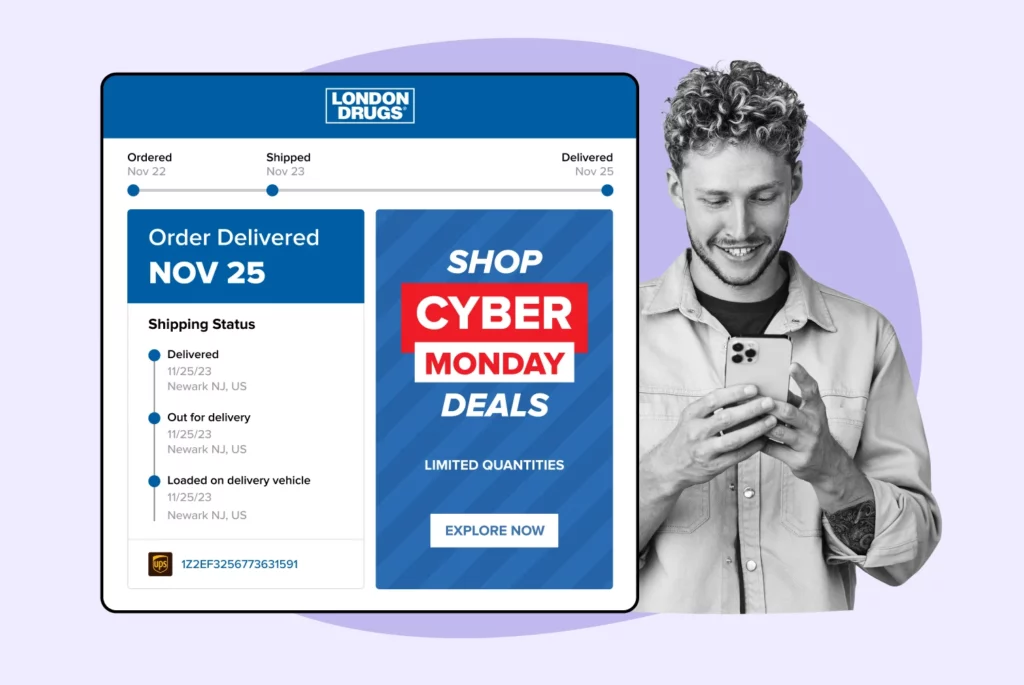
In this blog post, we explore various strategies to maximize customer retention Cyber Monday and ensure your business reaps the rewards during this critical time.
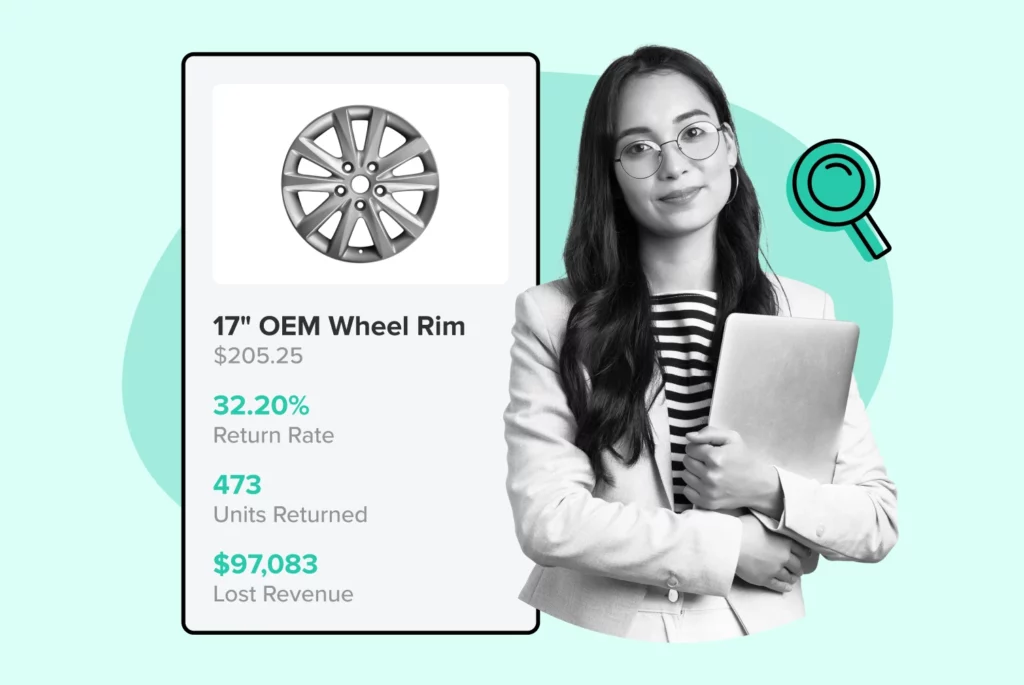
Let’s explore the potential of returns data and how you can use it to revolutionize your ecommerce business.
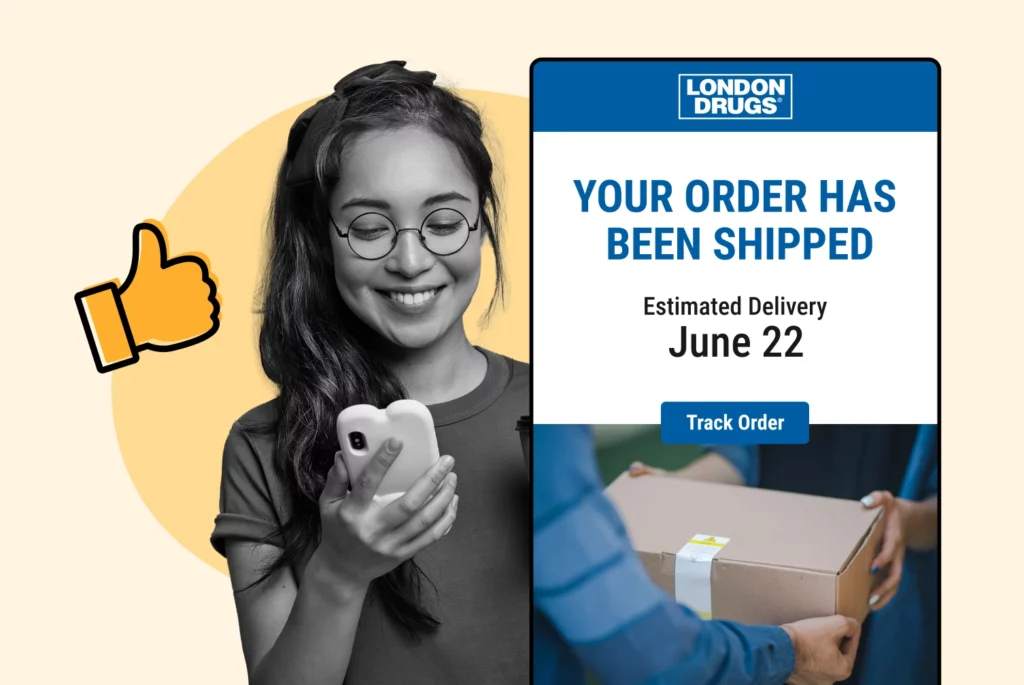
Let’s explore the importance of post-purchase engagement, the key elements of a successful post-purchase experience e-commerce, and the strategies businesses can employ to maximize customer retention and satisfaction.

In this blog post, we will explore the importance of returns management in e-commerce customer retention and the cost and impact of customer acquisition vs. customer retention returns.

A guide to developing a customer retention plan: customer retention’s importance & the secrets to successful customer retention strategies.
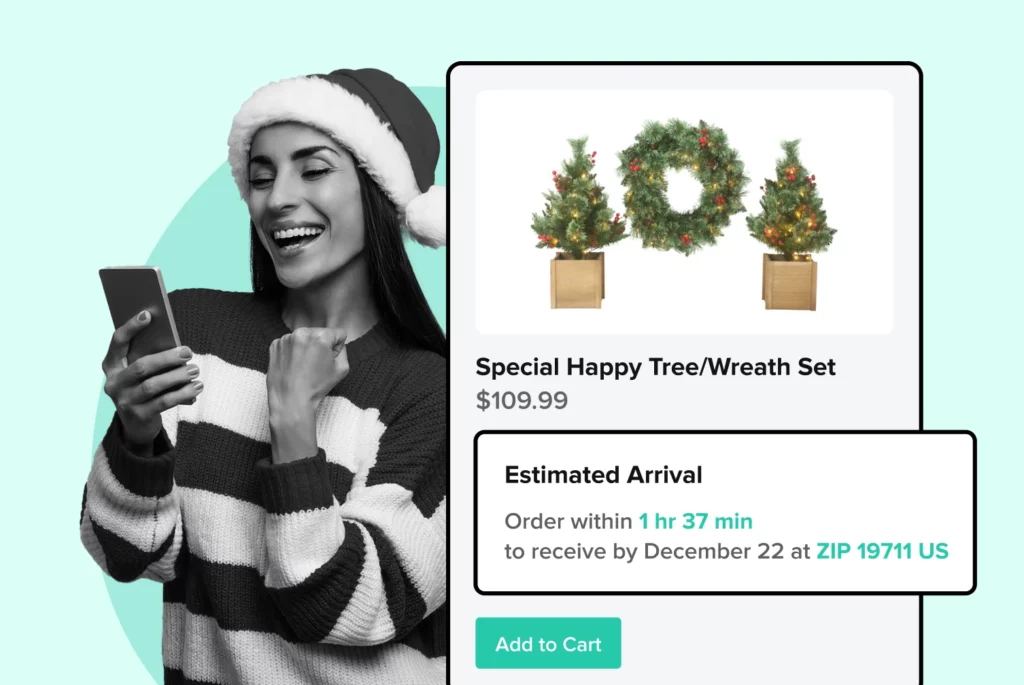
How to boost customer loyalty among seasonal shoppers: loyalty programs, chat marketing, omnichannel experiences, proactive customer support.